BEST LIGHTWEIGHT WHEELS FOR CLIMBING

If you regularly ride steep, long climbs, you should consider getting the best lightweight wheels or climbing wheels you can find.
The best lightweight wheels for climbing are stiff, aerodynamic, comfortable, and light. Those characteristics will help you convert your power and hard work as efficiently as possible going up while confidently handling the high speeds and frequent cornering coming down.
But there are dedicated climbing wheels and wheels that climb and perform well on a range of terrain and surfaces.
In this post, I’ll share with you the kind of riding I believe best suits climbing wheels, what matters most when choosing lightweight wheels, and our reviews of those we’ve tested from some of the leading wheelmakers.
In The Know Cycling is ad-free, subscription-free, and reader-supported. If you want to help keep it rolling without any added cost to you, buy your gear and kit after clicking the store links on the site. When you do, we may earn an affiliate commission that will help me cover the expenses to create and publish our independent, comprehensive and comparative reviews. Thank you, Steve. Learn more.
BEST PERFORMER – ROVAL TERRA CLX II
While the Roval Terra CLX II is a versatile road and gravel wheelset, it’s the best road climbing wheelset we’ve tested and the least expensive among the top performers in this category. Roval also makes the Alpinist, its designated climbing wheelset, but the Terra (1278g on my scale with a HG freehub) is just as light and has wider rims, allowing you to run wider tires for more comfort without any aero loss.
Yet, despite their weight and relatively low profile (33.0mm measured), they are also great all-around road and racing wheels. With 28mm Continental Grand Prix 5000 S TR tires inflated in the low 50psi range (25.3mm internal width, 68kg rider weight), you’ve got a race-ready setup.
Stiff, responsive, and compliant, they handle better than most riding switchbacks or just freewheeling downhill at high speed. The DT Swiss 180 EXP hub is also a smooth, quiet partner.
At US$2500, £2500, or €2850 retail price, while not cheap, you can order the Roval Terra CLX II through these links to Competitive Cyclist, Performance Bike, and BikeInn, each an online store I’ve vetted and recommend for their competitive prices, selection, customer satisfaction, and reader support.
You can read my full review here.
WHAT YOU NEED TO KNOW ABOUT THE LIGHTWEIGHT WHEELS
Click on any red statement below to go directly to that part of the post
Find what you're looking for at In The Know Cycling's Know's Shop
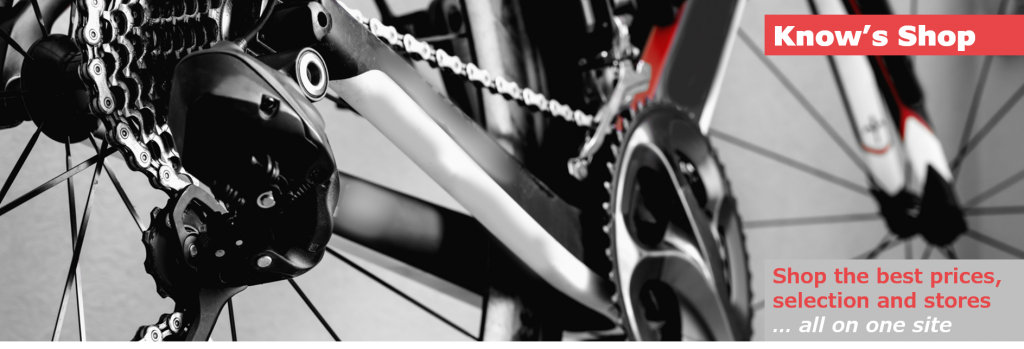
- Compare prices on in-stock cycling gear at 15 of my top-ranked stores
- Choose from over 75,000 bikes, wheels, components, clothing, electronics, and other kit
- Save money and time while supporting the site when you buy at a store after clicking on a link
WHO CLIMBING WHEELS ARE BEST FOR
Climbing wheels are for riders who do long rides that are centered on climbing up and going down 7% and steeper pitches that go on for kilometers or miles at a time.
I don’t mean those of us who regularly ride “rollers,” those 4-5%, half-kilometer or quarter-mile hills that might total 5 km or miles during the course of a 40 to 75 km or mile ride. Or even those rides that might include a half km or even a half-mile climb that averages 7% during your ride.
You could certainly ride lightweight wheels on those kinds of rides to give you some advantage going up steeper sections. But you must ask yourself whether what you gain on the hills with climbing or lightweight wheels is worth what you lose on the flatter sections and downhills when you don’t ride more aero, all-around ones.
My experience? I really miss the deeper wheelset on the flats and going down the rollers when I’m riding climbing wheels or any lower profile wheelset on all but the steepest climbs and long rides.
For example, I did a 125 mile/200 km long ride with 8500 feet/2600 meters of climbing on a set of 25mm deep, 1350 gram lightweight wheels that included two steep, long, tough alpine climbs that exceeded 12% on average. The wheels were great on those climbs, the best I had ridden from that model year, but I think I worked just as hard, if not harder keeping up with the group on the far more frequent flat and rolling sections because I didn’t have deeper wheels.
Several months later, I did a steeper, shorter route, a 100 mile/160 km ride with about 11,000 feet/3350 meters of climbing on a 1425 gram, 33mm deep set of wheels. It seemed that I was always climbing or going downhill on that ride. I’m glad I was riding those wheels.
As all-around disc brake wheels have entered their 4th generation, they are getting lighter and deeper. Several that are now 45-50mm deep weigh between 1400 and 1500 grams. With a deeper carbon rim, they tend to be stiffer and transfer your power better than shallower, lighter ones do.
The best lightweight wheels for climbing have become deeper, some now close to 40mm, whereas several years ago, most were in the low 30mm range.
To set themselves apart, or at least to notice a performance difference compared to the latest all-around wheels, today’s climbing wheels need to be 100 to 150 grams lighter than those all-arounders while being deep enough to feel essentially as stiff.
Where I ride and even when I do all but the steepest routes with 1,000 feet or more of elevation every 10 miles of riding (300 meters per 15 kilometers), all-around road disc wheels are the way to go. I’ve reviewed the best of those wheels here.
If, on the other hand, I lived at the foot of or regularly visited the Rockies, Sierras, Pyrenees, Alps, etc., I’d definitely want to be able to put a set of lightweight wheels for climbing on my bike for those days when I’m doing those steep, long alpine climbs and descents.
Descending is not often considered when choosing climbing wheels. But, to do it fast and safely, aero and crosswind performance, stiffness, comfort, and handling are key to enjoying the ride downhill that you earned working so hard going uphill.
Of course, you could always have a support vehicle follow you and quickly change your climbing wheels when you hit the big mountains and switch back when you get off them.
What? Are your friends or partner not into that? Mine either.
Regardless, climbing wheels are also for those of you with deep pockets. Dedicated wheels for climbing may be the third or fourth wheelset in your quiver. You may still have stock wheels that came with your bike or another alloy set for all-weather training. You may also have all-around or aero wheels (or both) for most of your training, group riding, road racing, or TT riding. Maybe a gravel wheelset or some MTB wheels for off-road adventures.
We’re seeing more and more all-road wheels available that climb and descend well on well-paved, poorly-paved, and gravel roads. Some are nearly as good on steep pitches as pure climbers, and their versatility can serve you well, even though they’re not as fast as the best all-around wheels on and off-road. I’ve included the best climbing all-road wheels in this review.
As most of the best climbing wheels cost at least $2000/£1500/€2000 and many run half again more, it’s not a purchase for those trying to stick to a cycling budget. Lucky you!
LIGHTWEIGHT WHEELS SELECTION CRITERIA
If you believe weight is the primary benefit of riding a dedicated climbing wheelset, is that the primary criterion for choosing between them? Far from it.
When I evaluate wheels, I look at four groups of selection criteria and about 20 specific ones within those groups.
Immediately below, I’ve highlighted the relative importance of those criteria for wheels you’ll want on long, steep climbs and descents vs those for all-around and deeper aero wheels.
As you can see from the criteria I’ve emphasized for picking wheels for the mountains, half of them – aerodynamics, compliance, braking, and rim profile – are not criteria you would consider in choosing what has been traditionally considered a ‘climbing wheelset’. These are important characteristics to ride fast and confidently on the high-speed, steep descents you’ll experience going down a long mountain pass.
In these situations, you’ll want aerodynamic wheels for max speed with rim profiles that keep the bike stable in crosswinds. While most dedicated lightweight wheels for climbing are lower profile than all-arounds, you can still shape the rims to reduce drag and cheat the crosswinds.
You’ll also want compliant wheels going down often rough alpine roads and handle well as you are whipping through the switchbacks. If you are riding rim brake wheels, you’ll want to brake reliably at high downhill speeds and in all weather conditions. You don’t want any fading or degradation in braking on long descents. While this was more important for alloy and carbon rim brake wheels, disc brake rotors on road disc wheels must be aligned well with disc brake calipers and supported by good hydraulic brake systems to make it all work.
For climbing, you might as well take advantage of lightweight wheels, but you also want ones that transfer your energy into power as effectively as possible. That’s why stiffness is emphasized. When you are cranking out 250-400 watts trying to keep upright going up pitches ranging from 7% to 15% for what seems like forever, you want stiff wheels to convert your effort as efficiently as possible to the road.
As I hope you can see, you have different and equally important needs going up and down a long, steep mountain road, and weight is only one of many considerations. That’s why I think “climbing wheels” is a misnomer. Instead, you should consider these as both climbing and descending wheels or lightweight wheels that must perform well in both directions.
Finding wheels that accomplish all of this requires some trade-offs. Very light wheels aren’t usually the stiffest, for example. And aerodynamic wheels to some mean deep dish rims, which aren’t usually the best at handling on windy mountain descents.
There are also some things that you really don’t want to compromise on. Older carbon clinchers have no place on long downhills where you need to do a lot of braking as they can overheat, warp, ruin the wheels, and result in a blowout at speed. I no longer included rim brake wheels in this review as they are generally inferior to disc brake ones.
At the same, you don’t drag your brakes and overheat or warp your rotors.
The heavier you are, the more these criteria matter. You’ll put more energy into the bike going up and will travel at higher speeds and create more braking energy going down. A rider weighing 190lbs or 200lbs or more will want a stiffer wheelset than a 150lb rider with the same watts per kilogram. They will also need more room to brake.
On the other hand, the lighter rider will be more prone to getting pushed around on a windy descent if the wheel’s profile doesn’t handle crosswinds well and will benefit more from an aerodynamic profile that cuts through both crosswinds and the apparent wind created going down a mountain. None of the wheels in this review here are so deep or have rim profiles that cause a big problem, but some are shaped better than others to have no problem except in the strongest winds.
Looking to the pro racing circuit for guidance on climbing and descending wheels is a mistake. The best climbers typically weigh 135 to 145 lbs, have 6% or less body fat, often ride super-light, super-stiff bikes, and put out more than 5 watts/kilo going uphill during a race. They also have support vehicles to give them different wheels or bikes during the race, depending on the terrain.
I’d guess most road cycling enthusiasts have 15-20% body fat (the amount for a “fit body type”), climb at 3 to 4 watts/kilo, and often ride comfortable endurance bikes rather than super stiff or super light race bikes. Sorry to say, the pros and we amateurs live in two different worlds.
Even those of you lighter men and women with natural climber body types, <10% body fat, 4+ w/kg ratios, and on very stiff racing bikes will still finish 10-20% (3-6 minutes on an hour ride) behind pro-level racers on the most challenging climbs. You can draw on lessons from the pros, but buying the same wheels they ride, hoping to get a far better result, is not likely.
If we could buy their genetics, we’d have a better shot.
So with all that as background, let me share with you my evaluation of the best lightweight road disc climbing wheels I’ve tested. If you’re looking for rim brake wheels, I’ve recommended the best for climbing and other categories in this review.
REVIEWS OF LIGHTWEIGHT DISC BRAKE WHEELS FOR CLIMBING
Best Performer
ROVAL TERRA CLX II – AN ALL ROAD WINNER AND BEST CLIMBER
While the Roval Terra CLX II is a versatile road and gravel wheelset, it’s the best road climbing wheelset we’ve tested and the least expensive among the top performers in this category. Roval also makes the Alpinist, its designated climbing wheelset, but the Terra (1278g on my scale with a HG freehub) is just as light and has wider rims, allowing you to run wider tires for more comfort without any aero loss.
This one wheelset excels across a broader range of terrain and surfaces than most other high-performance all-road wheels we’ve tested and does so at a better price.
My fellow tester Miles calls the Roval Terra CLX II “quiver killers” after doing a range of road, gravel, and cyclocross rides and races on them. I used them to “cat up” and keep up on lumpy group road rides and challenging gravel ones. He set some climbing PRs with these wheels while I kept up with my buds on climbs where I typically get dropped.
Despite their weight and relatively low profile (33.0mm measured), they are also great all-around road and racing wheels. With 28mm Continental Grand Prix 5000 S TR tires inflated in the low 50psi range (25.3mm internal width, 68kg rider weight), you’ve got a race-ready setup.
The Terra CLX II wheels’ ability to maintain speed on fast courses surprised us. While you would want deeper wheels for a flat time trial, these Rovals handle better than most of any depth when cornering, on descents, and over rolling terrain. They snap up to speed in sprints, and you can drive them through corners.
Stable in sidewinds, the Terra CLX II is also very compliant. That might be surprising for a wheelset as responsive when accelerating and cornering as these. But given the ample internal rim width, there’s plenty of opportunity to create a comfortable combination with the right tires and inflation pressure.
I rode 28mm Vittoria Corsa Pro TLRs at 60psi on the Terra CLX II for a ride filled with climbs and rollers on cracked, mostly worn pavement that felt supremely comfortable at my touch points. If only my legs and lungs felt half as good!
Roval uses the DT Swiss 180 ratchet EXP internals with ceramic bearings in their CLX II hubs, ones I find roll smoother and quieter when easily and regularly cleaned and greased than DT Swiss’s 240 internals.
If you love to mix it up and ride aggressively, fast, and comfortably on a range of road, gravel, and cyclocross terrain and surfaces, the Roval Terra CLX II with the right tires is an all-road winner.
Note that it’s the Roval Terra CLX II I’ve reviewed here. The first generation Terra CLX (heavier and no longer made), Terra CL (different hub and spokes, heavier), Terra C (different rim, hub, and spokes, considerably heavier), and Terra CLX EVO (dedicated gravel wheels) while less expensive, perform differently enough not to be considered in the same all-road performance discussion with the Terra CLX II.
And at its US$2500, £2500, or €2850 retail price, while not cheap, the Roval Terra CLX II is still less than its climbing competitors in USD. You can order it while supporting the site’s ability to provide more independent reviews like this one at no additional cost to you when you buy it through these links to Competitive Cyclist, Performance Bike, and BikeInn, each an online store I’ve vetted and recommend for their competitive prices, selection, customer satisfaction, and reader support.
ZIPP 353 NSW – VERSATILITY TO A FAULT
Despite a depth that suggests it is an all-around wheelset, the Zipp 353 NSW wheelset doesn’t carry the momentum that the best all-around wheels do and climbs and descends nearly as well as the best, dedicated climbing wheels. It also performs well on everything from smooth paved roads to rough gravel ones.
Indeed, versatility is one of its greatest strengths.
At 1248 to 1268 grams, depending on the hubset you specify, the 353 NSW is almost freakishly light for a non-tubular wheelset of its depth and width. It’s 150 to 200 grams lighter than most of the current generation of tubeless disc carbon wheelsets and only about 100 grams heavier than the lightest, pure climbing ones.
It’s stiff, handles extremely well, and is supremely comfortable.
And boy, does it climb! I almost had to check that I hadn’t left my water bottle or saddle bag at home when I hit the hill a quarter-mile from my house the first time out.
Miles blew away the competition when he rode the 353 NSW in the Crank the Kanc race with a 5-mile, 7% uphill finish. Since the race starts with a 10-mile 1-2% grade, he put these Zipps on his Giant Propel aero bike. It turned that bike into a legitimate climber. That’s versatility for you.
We didn’t experience any effects of crosswinds riding the Zipp 353 NSW on flat and downhill terrain. While its rims have the sawtooth pattern designed to neutralize them on their deeper 454 NSW, crosswinds haven’t been an issue with the last couple of generations of Zipp mid-depth wheelsets we’ve tested. Even Zipp told me they used the sawtooth design on the 353 NSW principally to reduce weight.
Tracking in turns, making quick direction changes, and doing other handling maneuvers on both good and rough roads with these Zipps produces a confident thrill unmatched by most wheelsets.
And comfortable? You bet. Nate described them as “plush over bumps at high speeds.” Miles called them “fantastic, so comfortable cruising over imperfections.” I concur.
With its inside hookless rim width I measured at 25.5mm, we rode the 353 NSW with 28mm Schwalbe Pro One TLE during our test rides between 55 and 60 psi. I measured these tires, and the 28mm Specialized S-Works Turbo and Bontrager R3 Hard-Case Lite are all narrower than the rim. That will give you reduced aero drag at high speeds.
Yet, these Zipp 353 NSWs aren’t aero stars. All of us noted that you’ve got to keep the pressure on the pedals to keep your speeds up.
I rode the 353 NSW back to back on the same day and on the same route against the Zipp 303 NSW that it replaced. The 303 NSW was clearly superior in my ability to hold speed or momentum. I’m not sure why – likely because the 303 NSW is a 250-gram heavier wheelset, only a touch deeper than the undulating 42-46 mm deep 353 NSW and with an earlier generation of the smooth-flowing Cognition hub – but I noticed a big difference.
We had split opinions on the stiffness of the 353 NSW. Nate, one of the strongest age-group climbers in the region, was “underwhelmed by their stiffness”. He found them sluggish on short, punchy climbs. On the other hand, he thought the rear hub engaged more rapidly than the many other wheelsets he’s tested.
Miles, no slouch when it comes to climbing and only a few kgs lighter than Nate, thought these Zipps were “incredibly stiff,” but engagement felt average, especially when he accelerated on the steepest gradients during his hill training. Once engaged, however, he loved the way they accelerated.
To-mA-to, To-mAH-to? Hard to know.
I’ve now done a few gravel events on the 353 NSW. As expected, the comfort, handling, and climbing ability we’ve enjoyed on the road translates well off of it.
While the Zipp 353 NSW is clearly a standout climber and would likely perform with the best of them on gravel, it’s not as fast against other all-arounders. It’s almost as if its versatility works against it, especially when trying to justify the US$4220/£3376/€3798 price tag.
But if what it does well is the combination of things you are looking for, you can pick it up at Competitive Cyclist, BTD (BikeTiresDirect), Merlin, Sigma Sports, and BikeInn.
ENVE SES 2.3 – A PURE CLIMBER
The ENVE SES 2.3 is the epitome of a pure climbing wheelset. If I were writing a story about the ten best road climbs in the world for some glossy magazine, I’d ask the publisher to feature a photo of a cyclist on a bike with ENVE SES 2.3 wheels to give my article the utmost authenticity.
Many of us enthusiasts put our game faces on when it’s time to head up a 7% or steeper pitch, be it on a mountain road or a segment of a rolling course. We’ll shift down into an easier gear, slow our cadence, and grind it out.
Going down is usually a well-earned thrill. But, depending on your confidence in your bike and handling skills, the excitement can be full of nervous or freeing energy.
The ENVE SES 2.3 makes me want to seek out a well-paved climb and revel in the descent. While not the wheelset I would choose for every day, flatter rides or those on rougher surfaces, if it’s a day with 1,000 feet or so of elevation every 10 miles, I want to roll on the 2.3s.
Fellow-tester and P/1/2 road and crit racer Miles reported that the ENVE SES 2.3 “flew uphill.” Nate, a hill climb event podium regular, noted how well the wheelset transferred his power and felt “very light” for climbing. As a true uphill grinder, these ENVEs help me remember, if not relive, my younger days when I could get uphill as fast as my riding buddies.
It’s one of the stiffest and lightest climbing wheelsets we’ve tested. That’s an unbeatable combination. But, as we’ve noticed in its deeper wheels like the SES 3.4 and SES 4.5, there’s something in the way ENVE designs or laces or tensions its wheels that give them a spring-like response that sets them apart when it’s go-time.
Nate enthused the ENVE 2.3 is very lively and responsive. Even in his stiff Specialized Venge bike, “the wheels accelerate fast and give back the power you put in. And the hub engages immediately and is also nice and quiet.”
Miles bragged that he was winning town line sprints against riders with deeper wheels. He also used the wheels’ superior responsiveness and acceleration in pacelines to maneuver away from trouble when riders in front of him quickly changed their line without maintaining their speed.
Miles and Nate quickly noted how confidently and predictably the ENVE SES 2.3 went downhill. Miles leaned into them without hesitation at high speeds on technical descents during one P/1/2 race. With zero need to micro-adjust for side-to-side motion, Nate was totally comfortable riding downhill at higher speeds.
I’ll admit to being a bit more cautious than my better bike-handling fellow testers when cornering at downhill speeds on these ENVE wheels. While all of us rode the 2.3 with 28mm Schwalbe Pro One TLE tires, and I also tested them with the same size Continental Grand Prix 5000 S TR, I didn’t feel as confident leaning into turns as I do on climbing wheels that have a 25mm internal and 30mm external rim width compared to the 2.3’s 21.1 mm internal, 25.7mm external measured dimensions.
Call me spoiled or a wimp, but I prefer wider rims for my tires.
Nate and I also experienced less compliance on rougher roads on the ENVE SES 2.3 than on other climbing wheels we’ve tested. We inflated the tires close to the pressure ENVE recommends for these wheels, the tire width, and our weight, pressures consistent with the SRAM tire pressure calculator and a good deal less than the Silca one.
Still, you can feel every imperfection on an asphalt road and get a harsh ride on older or naturally rough pavement like chip seal.
And, of course, with its 28.5mm deep front wheel and 32.6mm deep rear, these aren’t aero stars. You can certainly accelerate up to aero speeds quickly, but keeping it there is more work than we’ve experienced on most other climbing wheels.
That’s less important in a paceline where drafting plays a bigger part. But, as a wheelset that’s less aero and less comfortable than most, the ENVE SES 2.3 isn’t one we’d choose for its versatility to ride both on climbing days and for everyday training and racing on various terrain.
But, for the fast-riding road enthusiast and racer looking for a dedicated climbing wheelset, the ENVE SES 2.3 is off the front. With a retail price of US$2850, £3350, €4000, you can order it using these links to recommended stores Competitive Cyclist, BTD (BikeTiresDirect), Merlin, and Sigma Sports.
BONTRAGER AEOLUS RSL 37 DISC – LIGHT AND NIMBLE CLIMBER
The Bontrager Aeolus RSL 37 disc wheelset is a lot of fun to ride. Scooting around with it on my bike brings me back to how I remember riding as a kid. You go left, right, up, down, and straight ahead without much thought. You go where you want without holding back.
These wheels are very light and yet stiff enough without being overly so. That combination made me feel agile and free while riding the RSL 37 in almost every situation. I climbed my most challenging steep, long “hill repeats” with comparative ease and did a few 50-mile, rolling rides on days after my hardest interval training of the week and felt totally relaxed and unfatigued during and at the end of those rides.
I’ll admit, I felt like something was out of whack when I rode the RSL the first time. It was early spring with plenty of crosswinds, and I was coming off too many stay-at-home-mandated Zwift rides. Early-season legs, wind in my face or from the side, and bib tights can make me feel a bit slow.
With the Bontrager RSL 37 disc, I cut through all of that. I immediately felt light, almost too light, and worried I’d get pushed around in the winds. Didn’t happen. The freehub engaged on command, and the wheels accelerated as quickly as I wanted and far faster than expected to the point where I had to shift down the cassette sooner than I normally do to keep up my speed.
At 37mm, the RSL rims are deeper than climbing wheels have traditionally been but about the same as the benchmark for that category set by the ENVE SES 3.4 (38mm front, 42mm rear) a few years ago. They’re nearly as deep as where carbon all-rounders have historically started (40mm) but no longer where they currently range (45-50mm).
For me, the Bontrager Aeolus RSL 37 disc is a pure climbing wheelset. It climbs and descends as well as any I’ve reviewed from any brand except for nearly 2x the price of the Zipp 353 NSW. Bontrager must also think so as they retired the 28mm deep Aeolus XXX 2 disc wheelset in its lineup for the RSL 37.
At the same time, Bontrager replaced 47mm deep all-around Aeolus XXX 4 with a slightly deeper (and wider and lighter) RSL 51. Makes sense, as I found the RSL 37 doesn’t sustain your momentum, as I’ve experienced with a deeper and slightly wider 45mm-50mm all-around wheelset.
The tires I rode these wheels with – 25C Bontrager R3 Hard-Case Lite, Continental Grand Prix 5000 tube-type tires, and the tubeless Continental Grand Prix 5000 TL tubeless – measured within a half mm of the RSL’s 27.5mm outside width.
As far as wheelset weight goes, I normally don’t make much mention of it because most of us can’t tell the difference between wheels weighing within 100-150 grams of each other that are typical of what you find from wheels in the same category. But since I’m reviewing a climbing wheelset and there may be a few of you weight weenies reading along, and principally because Bontrager gives you a few options that make a difference, I’ll go through it here.
If you want to use tube-type tires on these hooked rims, Bontrager provides you with a cloth-like rim strap along with the wheels that you can easily install by stretching it over the rim wall and snapping it into the rim bed. Per my scale, these weigh 22 grams per wheel.
The cloth strips won’t hold the air or sealant if you prefer tubeless tires. Instead, Bontrager also ships you plastic rim strip inserts to go into the rim bed. Those need some experience to install without cracking or breaking or getting them just enough off-center to mess up the bead lock alignment. They also add 62 grams to each rim, an unwarranted penalty if you care about climbing wheel weight.
The best solution is good old rim tape. One wrap or two. I tried both, and each sealed up successfully. The tape weighs 5-10 grams per wheel, depending on the kind you use and the number of wraps.
Bontrager has recently introduced some branded rim tape, and I prefer it to ENVE and Stan’s tape that I have historically used. You can order it here. Get the tape that measures the same as the internal width of the rims. In this case, that’s 21mm. I’m not sure if they will include the tape in the box with the wheelsets in the future.
No matter how you set it up, this wheelset will be light. I set them up initially for tubed-tire riding with the cloth-like rim straps (1376g) and later pulled them out and taped the rims (1352g, not including the valves) and mounted tubeless tires. With the 62g per wheel tubeless inserts, they’d weigh in around 1450 grams.
At 1352g for tubed or tubeless tires, it’s an easy choice.
Enough about climbing weight already! Going downhill and cornering at speed on the RSL 37 is a confident blast. And you don’t have to worry about crosswinds riding exposed roads. Simple. Fun and done.
As to comfort, these Bontragers aren’t any more or less so than most set up with tubes and the added pressure they require, even with the RSL’s 21mm inside width. As with any other wheelset this wide, you could safely lower your 25C tire pressure 5psi below the suggested level, use tubeless tires and drop it 10psi or mount up 28C tires. Wider tires would add a good deal more weight and further diminish your aero performance when riding above 18-20mph/29-32kph.
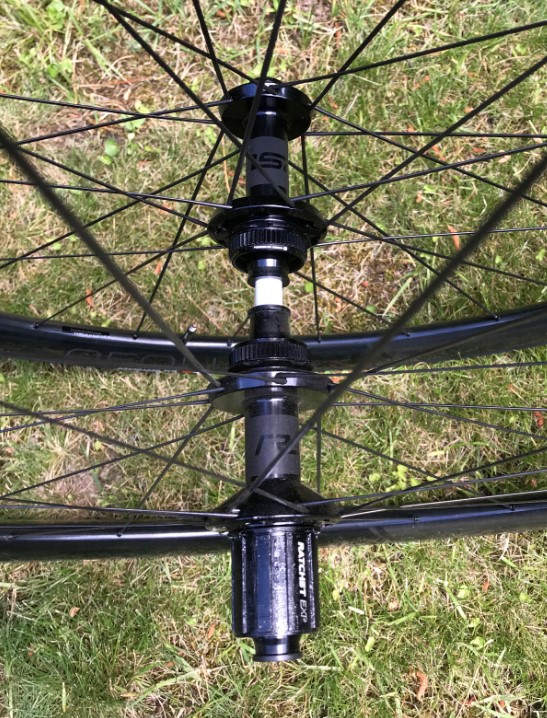 These wheels get an attractive glossy finish with black stealth logos. Also contributing to a skinny look and the low weight are the new DT Swiss 240 EXP hubs used on this wheelset. They roll a bit smoother than the last generation DT 240s, but their freehubs are a bit louder even after I regreased them. They’re not nearly as loud as Chris King, Industry Nine, or other hubs seeking attention, and DT Swiss hubs with a very similar design to the EXP have historically required next to no maintenance.
These wheels get an attractive glossy finish with black stealth logos. Also contributing to a skinny look and the low weight are the new DT Swiss 240 EXP hubs used on this wheelset. They roll a bit smoother than the last generation DT 240s, but their freehubs are a bit louder even after I regreased them. They’re not nearly as loud as Chris King, Industry Nine, or other hubs seeking attention, and DT Swiss hubs with a very similar design to the EXP have historically required next to no maintenance.
All in all, the Bontrager RSL 37 does a joyful job of its main purpose in life – climbing – and is a wheelset you can feel quite spry riding any day on rolling routes. Priced at US$2700, £2000, €2575, you can order them from Bontrager and Sigma Sports.
FULCRUM SPEED 25 – ROAD CLIMBER AND ALL-AROUNDER
The Fulcrum Speed 25 wheelset can serve two purposes for the road cycling enthusiast. It’s light and stiff enough to climb mountain roads, and its low-profile rims make it a suitable all-arounder for those riding in windy areas.
A smooth-rolling hubset, dead-quiet freehub, and ample compliance make the miles I’ve spent on the Fulcrum Speed 25 a real pleasure. My rides on this wheelset are more like low-stress outings than test rides.
High-intensity interval training, or HIIT workouts, seem less intense and less of a workout on this Fulcrum wheelset. It makes climbing steep mountain roads less about the effort I’m putting into climbing and more about the experience I’m getting on the mountain.
It’s almost as if the Fulcrum Speed 25 is the wheelset equivalent of “comfort food” for climbing and rolling around on my bike on any terrain.
Yet despite all of the pleasure I get riding the Fulcrum Speed 25 and my evaluation that it performs on par with the average of the climbing wheelsets we’ve tested, it doesn’t stand out for any one or combination of attributes beyond its smooth rolling and riding comfort.
It’s not as stiff as the stiffest climbers or as responsive as the most nimble ones. While this wheelset is certainly light at 1299 grams with a Shimano HG 11-speed hub on my scale, there are lighter and heavier ones in this climbing wheels category. And though my experience is admittedly more anecdotal than scientific, the Fulcrum Speed 25 has never been the fastest wheelset I’ve ridden up long, steep climbs in head-to-head comparisons against other climbing wheels.
Going downhill on the Fulcrum Speed 25 is a blast. With 28mm tires on its 21mm internal width rims, the cornering is confident, the ride comfortable, and the speed is as fast as you want to make it.
Yet at nearly 27mm deep, I’ll guess (since I can’t test) that you can’t go as fast as some of the others in this category that are 10-15mm deeper. On the flats, I don’t feel any aid from this wheelset in maintaining my speed above 20mph/32kph the way all-around wheels with a 45mm or deeper set of rims can provide.
Like all the wheelsets I’ve tested in the climbing category, including the deeper ones, this Fulcrum wheelset isn’t bothered by side winds, either on the flats or in the mountains. On the windiest days, I feel the high cross winds pushing my torso, but not this wheelset.
For some cycling enthusiasts, a light wheelset that climbs well, is unaffected by crosswinds, and is a real joy to ride on any paved road terrain is more important than having the fastest performer. If that speaks to you, this wheelset is worth considering.
With a retail price of US$2600, £2000, €2250 but available for less from some stores, you can order the Fulcrum Speed 25 wheelset at BikeInn.
BUT WHAT ABOUT…
Reviews of wheelsets only from Zipp, ENVE, Bontrager, Roval, and Fulcrum? I can imagine what you’re thinking.
Please don’t. I would love to share reviews of climbing wheelsets from DT Swiss, Shimano, Campagnolo, and a couple others.
Model changes, supply chain issues, or limited US distribution have made getting some of the latest models from these companies quite difficult. I’ll hopefully be able to test a few of these in the coming year when they are more available.
* * * * *
Thank you for reading. Please let me know what you think of anything I’ve written or ask any questions you might have in the comment section below.
If you’ve benefited from reading this review and want to keep new ones coming, buy your gear and kit after clicking the store links in this review and others across the site. When you do, we may earn an affiliate commission that will help me cover the expenses to create and publish more ad-free, subscription-free, and reader-supported reviews that are independent, comprehensive, and comparative.
If you prefer to buy at other stores, you can still support the site by contributing here or buying anything through these links to eBay and Amazon.
You can use the popup form or the one at the bottom of the sidebar to get notified when new posts come out. To see what gear and kit we’re testing or have just reviewed, follow us by clicking the icons below.
Thanks, and enjoy your rides safely! Cheers, Steve
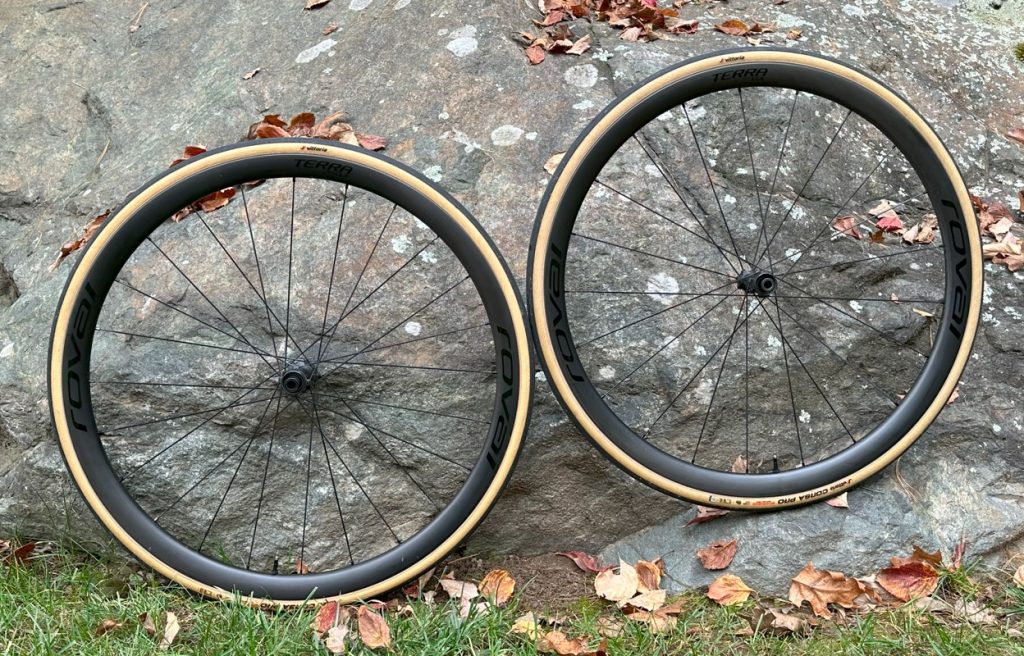
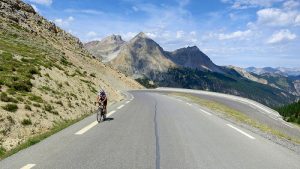
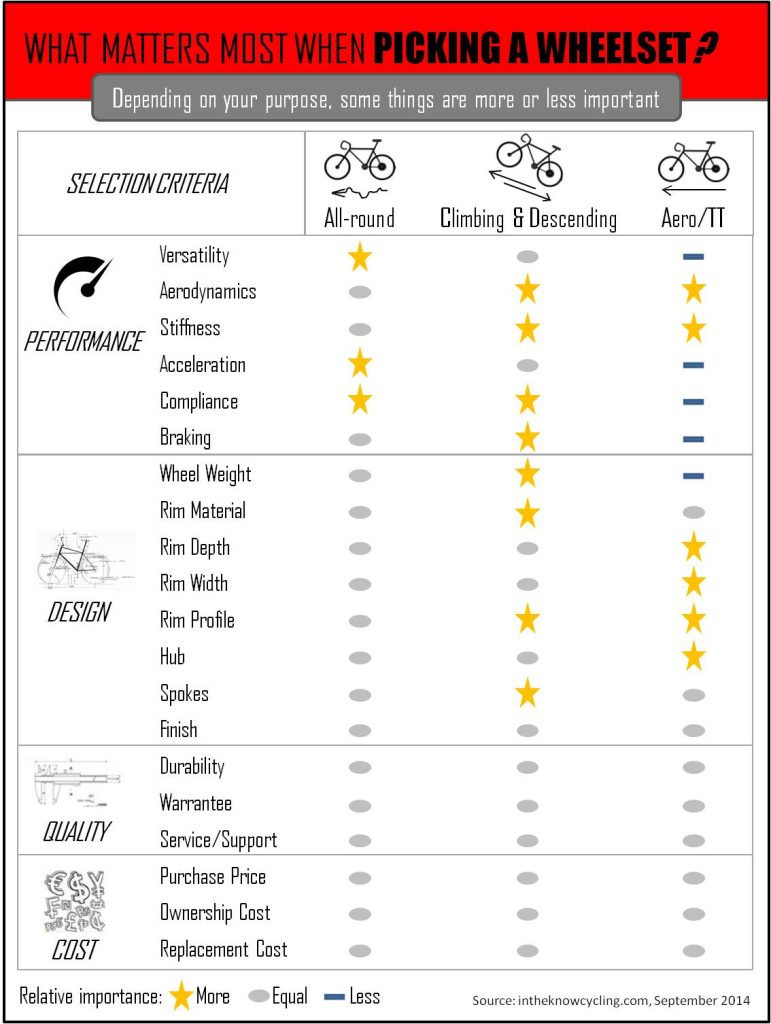
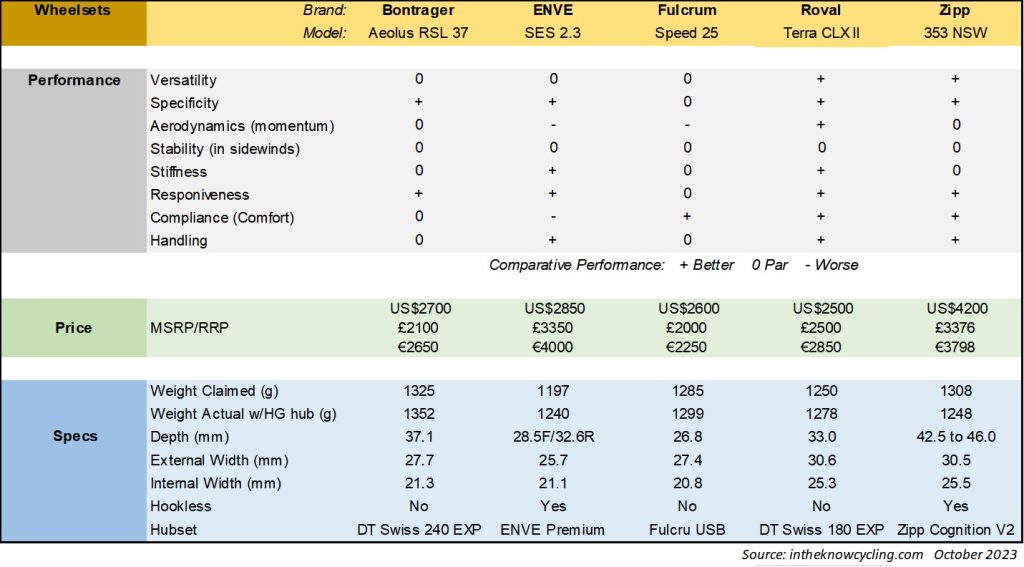
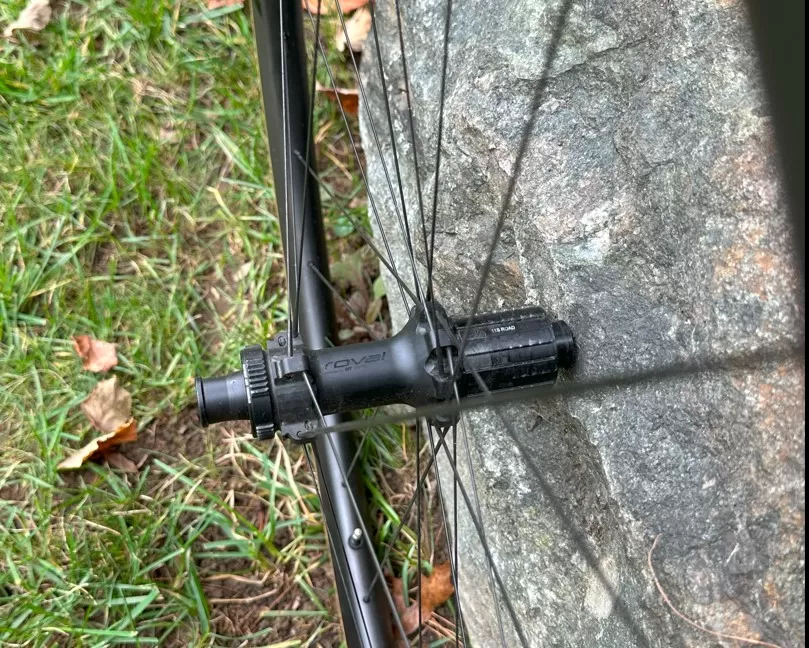
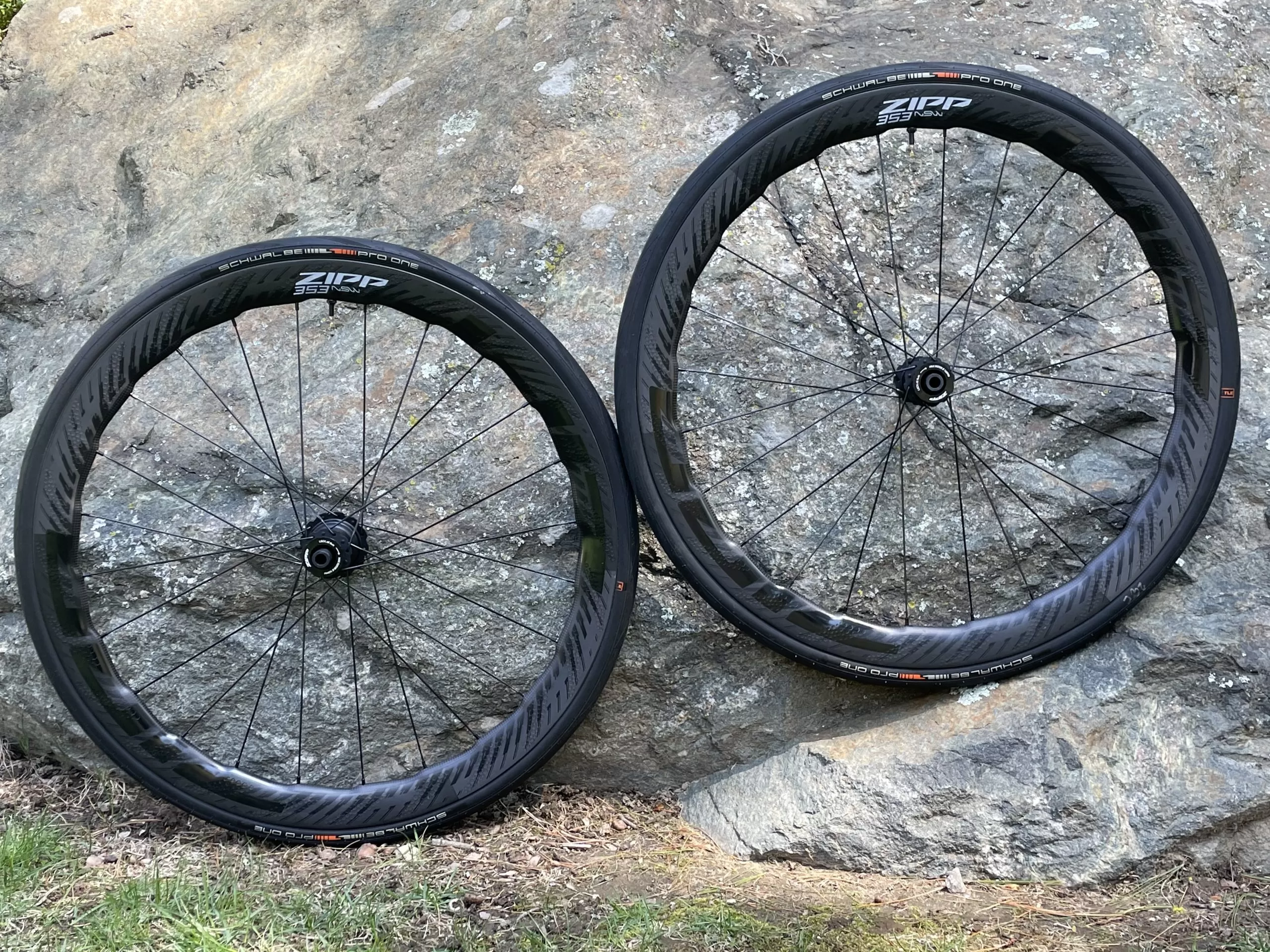

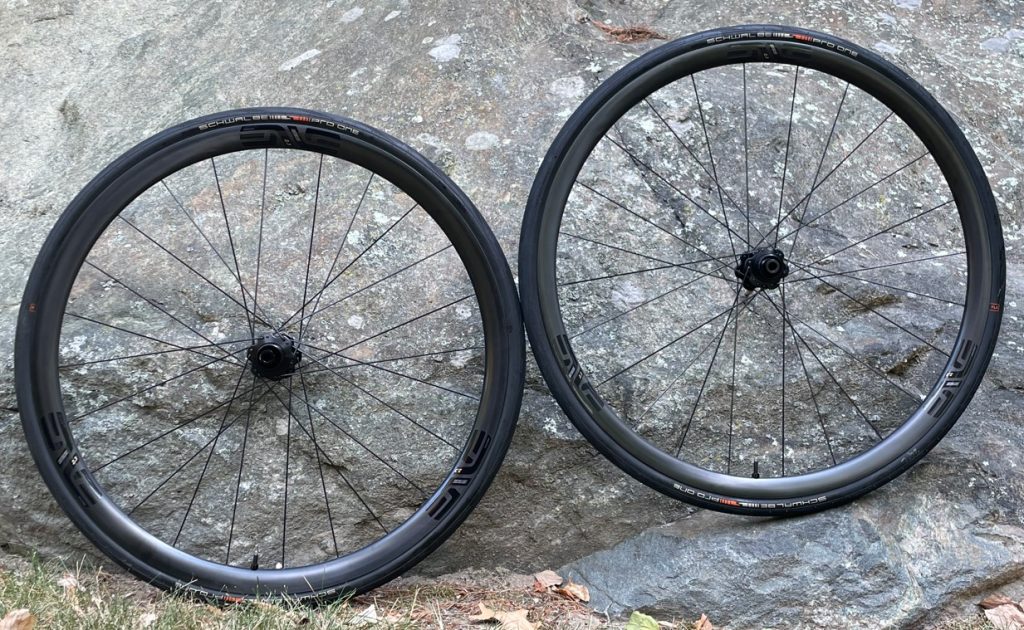
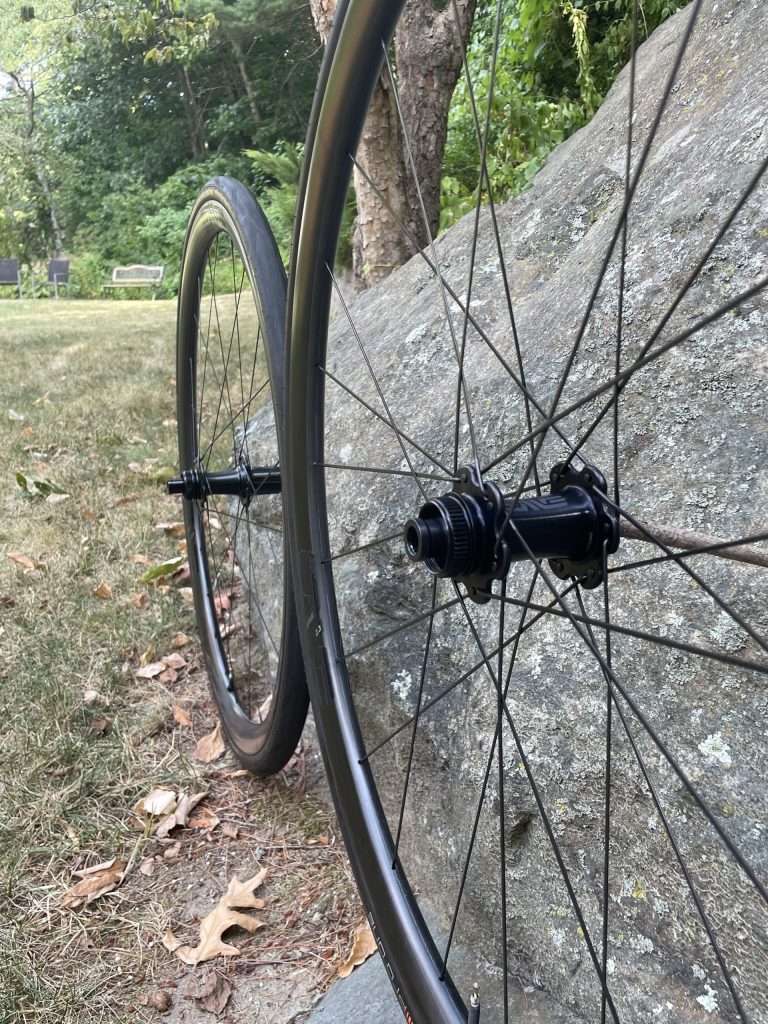
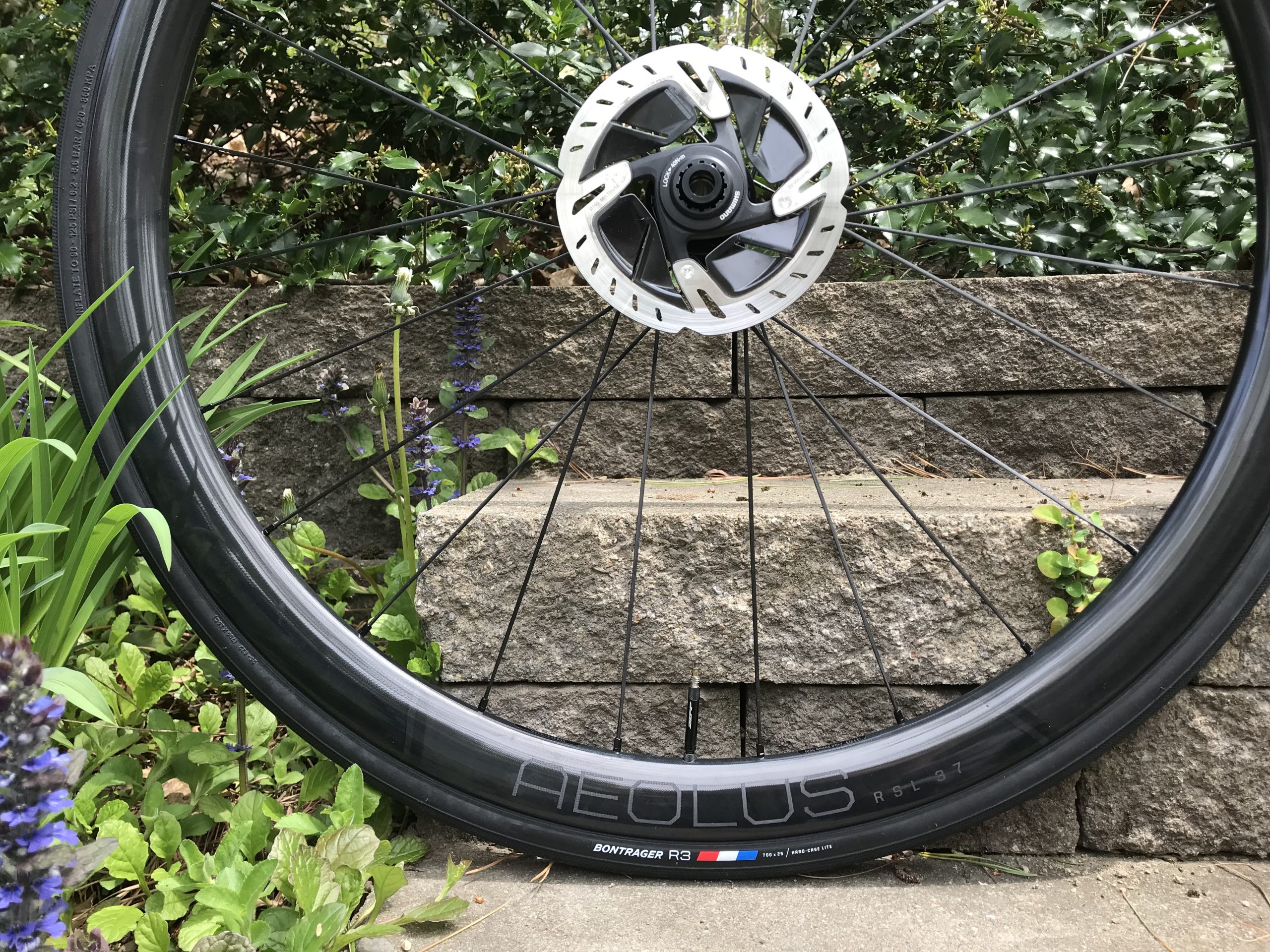
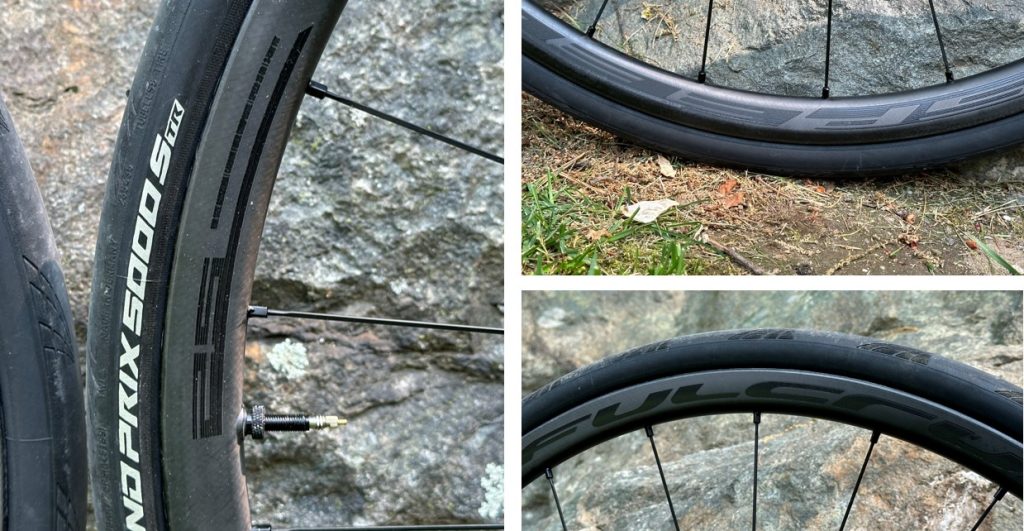
I really appreciate the time you put into this blog. I find it informative and very appropriate for type of riding I enjoy – mountains.
If I may respectfully disagree with one point and that is the braking capability of the Mavic’s in the wet. I think suggesting they may not be suitable is not right . I have an 18 month old set of almost identical cosmic version and live in of late wet UK and have extensively ridden them in the rain when caught out. I have also just completed this year’s Haute Route Pyranees with them where 2 stages were wet. I found no issues descending steep mountains in the wet and performed very similar to alloys when riding to the conditions.
The only caveat is like most textured rim, the braking surface needs to be cleaned of rubber buildup regularly especially after long spells of riding in dry weather; as do the swiss stop / Mavic yellow brake pads which tend to develop a sheen on their surface after a while. If neglected I have found this greatly reduces their performance in the wet, especially in the early stages – and perhaps this is what you experienced with the mavics? I find giving the rims a good wipe down with a premium nappy wipe every now and again, using fine sandpaper on the pads and clearing muck from the grooves in the pads when washing the bike maintains great stopping in the wet.
As an aside, there were many carbon braking rims on the Haute Route, perhaps as many as alloys and quite a few disk brakes (Inc. Ted King and Mike Cotty on disks) – there was only one report of carbon rim failure but some thought it was a dodgy tyre and not the rim.
Claude, Thanks for your field report. That’s good to hear. My experience was different and relative to other wheels I tested but you’ve put them to the test in some ideal conditions (at least for evaluating their braking) and I welcome your input. Note that the “texture” on the Pro Carbon SL isn’t much of a texture – hardly discernable and nothing like the texture on the Zipp or ENVE wheels.
I just wish Mavic would recommend something other than the Swiss Stop Yellow pads, perhaps the harder Black Prince ones? The yellows come speced with a fair number of carbon wheels and, similar to what you experienced, they wear quickly and leave a greenish, snotty looking mess on the rims. Good suggestion on how to clean them. Thanks for that.
And yes, disc brake bikes/wheels is the way to go if you want to let it all hang out going down descents. Cheers, Steve
Thank you so much for your excellent reviews.A few years ago I had 2 sets of Enve and had to return them because of delamination problems.The company was great to deal with but I lost confidence.Again that was at least 8-10 years ago.After your review I contacted my bike store because I am in the market for new climbing wheels.I use this store for over twenty years and they know what they are doing.When I mentioned the ENVE’s in your review they indicated that they have stopped selling them because of too many problems and beyond the usual brands are now looking at ALTO.First is there a problem with the longer use of the ENVE’s did you get any feedback from bike stores?Second any comments on ALTO.Again your reviews are very much appreciated.
Hans, Enve didn’t exist 8-10 years ago. Edge Composites, which became Enve in August of 2010, started in 2007. That may be what you are referring to. The first commercial carbon road bike wheels were just getting produced in volume for consumers around that time and delamination, cracking and failures of all types were part of life on the bleeding edge for every company trying to sell carbon wheels. We are now 3 or 4 generations beyond those first wheels and this is no longer an issue with product from established companies who’ve been around through those product improvements and riders who aren’t dragging their wheels. I wrote a whole section about this above.
I’m not aware of ENVE or other established brands I’ve reviewed having “too many problems”. If you buy wheels from newer companies or companies that source and market open mold wheels, you may run into delams. Even though I don’t recommend you drag your wheels, I test the wheels I review to see if they get hot or delam while dragging on long steeps because some people who don’t read about how to brake on carbon wheels might brake them as if they are riding alloy wheels. Tour Magazine (Issue 9/2014; available by subscription only) did testing to failure for a range of carbon wheels in a variety of downhill conditions. I note which wheels don’t cut it if/when they don’t
I don’t know much about ALTO wheels other than what I’ve seen on their web site or the specifics behind why your LBS may no longer be carrying ENVE wheels. There are too many young companies like ALTO for me to chase them all down. As a consumer and a fellow road cyclist, I prefer to buy and test product from companies that have been around for a while and established a track record. I know I may miss some good product because of it but I’m not running a business and I’m not out there trying to promote product for the cycling industry or my own financial benefit. I don’t poll bike stores on why the carry or don’t carry certain products. There are a myriad of reasons that may have to do with their own and their suppliers business decisions to sell or distribute product to them including everything from volume to profit margins to product performance to quality to other lines in their store, etc. Steve
Would love to see the new Mavic Cosmic Carbon Pro SL UST added to your excellent review of CCC wheels with both 23mm and 25mm Yksium Tubeless tyres. 25mm is standard firmest but I think the 23mm should be more aero and slightly lighter, but how much do you lose in comfort and grip?
Brett Sachs
Brett, Have reviewed the Cosmic Pro Carbon SL C in my all-around post here. I look to review the UST this spring. The UST version has a 19C inside width so I’d recommend the 25C tire for the best overall performance. Really no reason to go to a 23C (not sure they even offer it) as it’s not a track or TT wheelset that would go on the most aero bike and you’d be kitted up to gain the incremental benefit of a slightly more aero tire-wheelset combo. Steve
Useful article Steve. Putting aside the merits or otherwise of Shimano RS81, the width claimed for that wheel is 20.7mm. I assume that wheel is wide enough for a 25mm clincher?
John, I wouldn’t put anything wider than a 23C tire on that wheelset. For more, check out this post on exactly this topic:http://intheknowcycling.com/2016/04/03/best-wider-road-bike-tires-wheel-sizes/ Steve
Great comprehensive and seemingly unbiased review. Bravo! I have three sets of wheels. 3.4 tubies non textured (CKR45) 2.2 tubies textured (Tune), and Roval CLx 32 clinchers. Just a quick note…I agree, unfortunately, that the braking on the CLx 32s was a disappointment for me as well. Braking somewhat noisy as well. Having said that, I found them to be more responsive and stiffer than your experience with them. I feel like I do a good amount of climbing, 600 K ‘ thus far this year over 180 recorded rides. For reference, I am 5’8″ and weigh 134 lbs. I am looking to replace my 3.4s with the textured version in the near future. Again, thanks for the great read!
Tony, Thanks for the feedback on the review and your CLX 32s. Looks like you have the ideal climber body type… and a lot of climbing wheels! Enjoy, Steve
What about Vision Metron 40 SLs?
Klaus, Reviewed this wheel a few years ago. Compared to today’s carbon clinchers, it’s not light and has an inferior brake track. Not a climbing wheelset and not competitive on a performance basis even as an all-around. Build quality was also sub-par. No longer include it in the all-around review because I don’t think it’s one enthusiasts should consider. Steve
How do the ENVE 3.4 perform in wet conditions?
Bryan, Their wet braking is the best I’ve ever experienced, superior to Zipp, Mavic, Campy and any others who claim to have specially treated or textured tracks. Steve
I have been using Enve 2.2’s on my new Trek emonda for 2 months and 1000mls. I thought they were brilliant until descending the Zoncolan in the Dolomites last week. It was cold and damp and within 500 m of starting to descend the front rim deformed/ ruptured big time.
I managed to get to the bottom very slowly with no mishaps fortunately.
Has anyone else had this problem and if so would you, Steve go for the 3.4’s you have just reviewed? I am intending to get in touch with the supplier tomorrow to either get a full refund for the pair or possibly get the 3.4’s instead
I emailed Enve 24 hrs ago with a picture and have yet to hear from them btw. I will be interested to see if they get back to me, I won’t be impressed if they don’t!
Gareth, big time bummer to read about your trip down the Zoncolan. I’ve ridden both the ENVE 2.2 and 3.4 (and 4.5) down some long steeps with never a problem. Nate did the 6-gaps, 100 mile, 10,000 ft climbing ride up in VT this summer on the new 3.4s on a very warm day also with no issue at all. The fact your front went after 500m on a cold day says to me there was something going on other than the kind of overheating I’ve seen with older carbon wheels.
ENVE is usually pretty good and they have a 5 yr warranty so I expect they’ll take good care of you. Let me know how it goes after you work everything through. Steve
Many thanks Steve. Do you think I would notice a significant difference in performance and stiffness between the 2.2’s and 3.4’s ?
I am certainly tempted by the latter despite the slight weight penalty. I note the rims are approx 150g heavier than the 2.2’s. I weigh 68 kg and am 5’8′ btw.
Cheers
Gareth
Gareth, I think the 3.4’s are stiffer and faster. Certainly faster going downhill and on the flats. The rim weight difference is negligible – 50g front, 45g rear. You won’t notice that difference going uphill. Steve
Hi, I’m getting a brand new Enve SES 3.4’s from a private seller for $2200. Is that a good buy if I compare them against $1600 Reynold’s Assault’s or the Mavics Cosmic pro Carbon SL? Most of my rides are flats or rollers (4-5%) and sometimes 8-10% (not long hauls though). Please advise. And many thanks for putting out these reviews. Great job.
Maninder, If they are first generation 3.4s, it’s not a great deal. If it is a second generation one, it is. BTW, you can the Assaults new at <$1600 if you use the links and discount codes I've provided for you in the post. I think they are pretty darn good but not as versatile as the new 3.4 for the kind of riding you are doing. Steve
Thanks Steve. And how can you tell if the pair is a 2nd generation or the first?
Maninder, Ask the seller for starters. The dimensions are different. The G2 is 38mm front/42mm rear vs 35mm/45mm the first generation; 21mm internal width, 29mm external width on the G2 vs narrower on G1. Also check out which hub they have on them. They come with either an ENVE ceramic hub (G2 only), Chris King or DT240 hub. Makes a difference in the sound and performance of the wheelset. Steve
Thanks Steve. Upon reading your reviews on other wheels, I’m thinking I should go with the Zipp 404 NSW’s (or Firecrest) or the SES 4.5 as my rides are more on the plains or rollers than on the mountains. What do you think? Or any other suggestion?
Maninder, Agree. The SES 4.5 is the more versatile of the two. The 404 NSW is a flat out speed wheel. Steve
Hi Steve, speaking to a local wheel holder who’s top recommendation like you is the ENVE 3.4s. As they’re out of my price range, his next best suggestion is the Alto Velo CC52s. Can find very little reviews so wondered whether you have tested these.
Paul, All due respect to you and your dealer, but it sounds like he’s trying to sell you a line he carries rather than what’s in your best interests. The wheel he’s recommending is 52mm deep and weighs 1600g. This is an aero wheel or, at best, an all-around but definitely not a climbing wheel. Alto Velo has been making wheels for about 2 years and is focused on the triathlon crowd. They are marketing their unique hub design – the rims are open mold.
I spend my time sorting through all of sorts of wheels and claims so you don’t have to go into a shop and choose between the three or four lines they carry and get sold on something that isn’t right for you. I recommend a Best Performer and Best Value in most reviews. In this case, if you can’t afford the ENVE, I recommend you get the Mavic I reviewed in this post. And if you value my opinion enough to ask for it, do me a solid and buy from one of the stores I link you to so I can continue to fund the purchase, testing and reviews of these wheels. You’ll also do yourself a solid because, if you buy from these links, you’ll be buying from those that have the best prices and the highest customer satisfaction ratings. Steve
Cheers Steve, really appreciate that. The Mavics look good and a clubmate also recommended them. My only concern with Mavic was hearing from a few that getting a broken spoke can be difficult to source a replacement. Personally, I’ve never experienced a broken spoke, although there’s always a first, but wondered if this may be due to me being a lighter rider. Also, buying a couple of spare spokes when purchasing the wheelset would solve any sourcing issues later. Thanks again and will checkout the links.
Hi Steve, thanks for the comprehensive review!
Just a question, how wide are the ENVE 3.4 wheels? On the official website, they are stated as 27.5mm, but it seems that different websites give different widths
I am thinking of picking up a pair, but my BMC only allows clearance of up to 28mm widths, so that is a concern.
Melvin, There’s a chart in the post showing the rim widths of each of the wheels in the post. The “track width” or width at the brake track is the number you want to look at. Depending on what tire you put on and how much you inflate it, the wheel width can be even wider than the rim width. And then you want to allow 4-5mm on either side of the wheel for deflection when you are cornering under load. So if your BMC only has 28mm of clearance, I don’t think any of the wheels in this review are going to fit. That said, you might want to double check that 28mm number. Sounds pretty narrow to me. Perhaps its an older bike or perhaps that’s the recommended widest width wheel. Steve
Hi Steve, thanks for the quick reply. The assembly manual says maximum rim width of 28mm.
On the official website, the 3.4 (front and rear) states their width as 27.5mm. On your chart, the front is stated as 28.3mm, therefore the concern
Melvin, the front and rear ENVE wheels are different widths (shapes and depths) so that’s why you see the different front and rear measurements I took on the set I rode. I also ran a 25C Zipp Tangente Tire that measured 26.7mm wide on the front wheel at 100psi. If you want to run a 28C tire, which I wouldn’t recommend, it will give you a wider wheel.
I’d put the manual aside for a moment and measure the widths of the narrowest opening between your front forks and rear chain and seat stays. I’d also measure the brake caliper openings fully extended. You may need to add some more cable to your calipers or upgrade them to allow for enough opening for a wheelset the width of modern wheels mounted with 25C tires. Steve
Hmm, I’ve owned my Enve 3.4’s for almost a year now (with Chris King hubs), and I’m not sure where you’re getting “superior stiffness” from – they are probably the least laterally stiff wheels I’ve ever ridden, and I can easily get them to rub the brake tracks if I don’t open up the calipers. I’m not a particularly large rider at 154 pounds – if these wheels were stiff and not whippy, they’d be almost perfect. I love the braking with them, and haven’t had any issues with overheating on extremely steep descents (including the infamous Hauser Bridge on Levi’s Gran Fondo) – the first year I rode it, I stood in line with 4 people in front of me who had melted/destroyed carbon wheels and waiting to get replacement wheels from the SRAM dude.
Hi Steve, just found this site and think it is fantastic. I have experienced warping of the rim on a first generation Easton EC 90 clincher rear wheel when descending in the Pyrenees. The rim was extremely hot to the touch. I have a new (I believe 2nd generation) of Easton EC 90 clincher wheels, I do notice brake squeal, but they do seem to dissipate heat much better. I am planning a trip to the Alps this upcoming summer and am seriously considering an alloy rim to prevent any problem, I’d like to get your thoughts about this approach. Do you have any information/opinion on the Easton wheels? The performance of them is great! Best regards and thanks for you informative sight. Chris
Chris, Thanks and welcome. I reviewed the wheelset here. You can always use the search bar at the top any page on the site to see links to reviews of products you may be interested in. Steve
Thank you Steve for the excellent review, appreciate it and spot on with what I find riding them.
Steve, how would the Roval CLX32 wheelset compare with the older wheelsets like the ENVE SES 2.2 and the Zipp 202 Firecrest? I was planning to get the CLX32 wheelset for my wife who is just under 5’3″ and weighs in at only 97 lbs!
Keith, The ENVE SES 2.2 was my Best Performer pick in this category before the 3.4 and I didn’t recommend anyone buy the Zipp 202 Firecrest for climbing because of its braking performance. The 2.2 is light, comfortable, stiff and brakes very well. The 3.4 does all of that and provides aero benefits that suit you going downhill and on the flats. As you read here, I’m not a fan of the CLX32 for a number of reasons. Stiffness wouldn’t be an issue at her weight but the downhill braking isn’t great even for a low mass rider. Steve
Hi Steve, i have just had a spoke ping in the rear wheel of my Enve 3.4 (not second gen but have the rough break track). I would agree with Dana that they suffer from increased flexion and i have to open the rear brake pads to prevent rubbing. The amount of noise on descending in the wet, on La Marmotte left me reaching for ear plugs!!
I would love to get Moose’s feed back from the Enve 3.4’s and see if what problems he encountered. I am just about to send my wheels back to Merlin Cycles who will in turn send back to Saddle Back so i will keep you updated with customer service. Any advice on wheels that will last me more than a season, i have now gone through 2 x sets of Dura Ace C24 9000 front wheels, the Enve as mentioned above and need something to last me at 85kg i wouldnt say i am over weight and only put out 380 watts for a 20min FTP so should wheels snap this regularly or am i just unlucky.
Great review by the way.
James, Moose rode them through the mountains in VT without issue though he didn’t have any rain during his trial. He’s about 90kg but then I don’t think he does “only” 380 watts FTP. That my friend is a pretty impressive FTP, in the pro racer range, but shouldn’t cause ENVE wheel spokes to snap. Likely just bad luck.
Textured brake tracks on the second rev of the G1 3.4 and new G2 and other ENVE wheels do give off a distinctive hum which I’ve never found objectionable the way some last gen carbon rim brake wheels squeal. Wet surfaces do make it louder. The Zipp textured tracks also have a distinctive sound. The ENVEs do work well and that’s the bottom line for me. They are both stiffer and brake better than the Zipps and are one of few carbon wheelsets that have textured tracks. The only better solution is a disc brake wheelset.
You are clearly too strong/heavy for the C24. They are pretty noodly for riders above 80kg and certainly for anyone with your power output.
Let me know how you make out with your 3.4s. Steve
James – I had Enve rebuild my wheels with DT Competition spokes – so much better now than the crappy aerolites they come with. Like a whole different wheelset really – I actually like them now.
Hi Steve, great read, so useful! Advice on a choice of two please. both clinchers..ksyrium pro carbon or cosmic pro carbon ust. Mavic aren’t launching the Ksyrium carbon in UST livery until 2019 they tell me. There’s about 100g stated difference in weight so can’t see much of a difference going up hill unless stiffness is significantly different between the 2? That said, I am though tempted by the slight weight saving of the ksyrium but also attracted by going tubeless with the cosmics and getting some rolling speed advantages- possibly without much of a climbing downside. Is it so marginal as to not make any real world material difference or would I really feel a difference between the two when climbing and on the flats?
Peter, Depending on who you are (e.g. your own weight) and how you ride (e.g. your strength being a climber or not), you’ll likely not notice a 100g of weight difference but might begin to at the 135g in actual weight difference I measured between the two if you are a climber. Tubeless is cool if you ride rough roads and prefer low pressures but, even in the UST version, it’s not everyone’s cup of tea. Added depth is nice but depends on your rolling speed and wheel profile. So there are a lot of trade-offs here. The Cosmic Pro didn’t really stand out for me as you can read about here. If price is important, the Ksyriums are nearly half price now in advance of the UST version at the stores I link you to. Steve
Thanks Steve. I’m 75kg and love the punchy steep climbs we get a lot of here in the UK. 15%-25% full gas for 3 to 6 mins. I’m not any good but I do keep riding them! So weight is important but I guess stiffness/acceleration is equally so. Prices for both over here are similar- about £1200-£1350 and no sign of a UST version of the Ksyrium from what I can see. Tubeless worries me a bit so I’m probably not quite ready for that, so given that the Kysriums are a pretty good all rounder as well as being stiff and light I’ll probably go that way.
Hi Steve, do you have any experience of riding the tubular version of the Ksyrium pro carbon? It’s heavily discounted at the moment here in the UK and a claimed weight per wheelset of 1190g is pretty appealing. In your experience are tubular versions just as stiff as their clincher counterparts?
Peter, I have no experience with the tubular version of this wheelset. Steve
Hi Steve, any thoughts about the DT Swiss dicut 1100 (disc) that come with the Canyon Endurace CF SLX bikes ?
Hi Rob, Take a look here for my review of the DT Swiss ERC 1100 Dicut 47 which only comes on the highest priced EU version of the Canyon Endurace CF SLX Disc 9.0 LTD. It’s not a climbing wheelset; I really don’t see one in their new lineup. Steve
Steve,
Any initial thoughts about Mavics new Cosmic Pro Carbon SL UST. I am looking to upgrade from the Hed Ardennes LT Plus that came with my Cervelo R5. I am split in decision between Ksyrium Pro Carbon SL C and the new Cosmic Pro Carbon SL UST. I am 5’6” 143lbs and a strong climber. A typical ride is 65miles, rolling to climbing, 5,500 elevation. I have read most of your articles on climbers and all-rounders, but am still paused to make a decision.
Kind thanks,
Mike
Hi Mike, I think you are limiting yourself if you are just looking at Mavics. There are better climbing wheels than both of those if climbing wheels are what you are primarily looking for. And there are better all-around wheels if you want those.
If you are looking only at Mavic and your budget can afford it, I’d go with the Cosmic UST – it’s only 100g or so heavier than the Ksyrium and is more versatile. If you are looking exclusively for climbing wheels and you want to stick with you Ardennes as an all-around or plan to get another good set of all arounds and you’re a weight weenie – you’ve dropped weight everywhere else you can – and you don’t want to spend any more than you have to, I’d go with the Ksyrium. They are half the price of the Cosmic. Your average speed, budget, goals, etc. all weigh into this. If you haven’t read it yet, I’d recommend you read this one on making a wheelset choice for your specific rider profile to help with your decision making. Steve
Thank you Steve,
I originally wanted to invest in a set of Enve 3.4’s with DT Swiss 240’s. But I am attracted to the Cosmic UST’s as a budget conscious alternative. I’m just not sure how much performance I’m giving up for savings.
The Ksyrium’s are attractive at their current price point. But, once again, are any gains made on accent over the Cosmic’s negligible.
Mike
Mike, If you are buying these as a climbing wheelset, I’d say there’s a far bigger difference between the Enve 3.4 and the Cosmic than than there is between the Cosmic and the Ksyrium.
Steve,
That’s what I needed to hear.
Your research and experience is appreciated.
Great bit of information Steve. I know very little about wheels so was very interesting. May I ask a question as we are in 2018 now and more new wheels may have come to the market?
I want to ger a carbon set but with Aluminium strips for breaking. I have around £500 to spend. Any recommendations? Its for a road bike
Mohan, the best place to start is to take a look at my post HOW TO CHOOSE THE BEST ROAD BIKE WHEELS FOR YOU. Steve
Hey Steve, this is a great review. Thanks. Question: I’m 192cm, 79kg, and my average 2018 ride thus far has been 47 km and 970 meters climbing. I also will be in the Dolomites this summer (630 km 13K meters climbing) and the Haute Alps (840 km and 23K meters climbing.) I’m looking to get wheels to match my weight and climbing – climbing and descending the steepest, longest mountain roads, possibly in wet conditions. I’m looking for excellent braking as quiet as possible. Which wheels do you suggest?
Aaron, If you want to go with carbon wheels, go with the Enve I recommended in this review. If you aren’t comfortable braking carbon in the way I’ve described above, I’d suggest an alloy wheelset – either the Easton or Pro-Lite – from this review. Steve
Steve, you are a legend. Thank you. I noticed that you give none of the alloy wheelsets a + for braking; a bit worrying. Should I be concerned about that? Also, if you were choosing an alloy wheetset for me (79kg), would you go Easton or Pro-Lite over the HED Ardennes Plus Black Clincher Wheelset Clydesdale version?
Aaron, Thanks for your feedback and support of the site. The ratings are comparable. A “+” or “-” rating means that a wheelset is comparably better or worse than the others in the review. Unfortunately, I can’t choose a wheelset for you based on a few bits of information about you and, even if I had your full profile, I don’t have enough time to do this for all the good riders who ask and also test gear, write reviews, and respond to questions. I can merely direct you to reviews I’ve written about wheelsets that might apply.
To help you and other readers pick wheelsets best suited to your situation, I did write this review for that purpose. Steve
The review you linked to is a huge help – it’s really pointed me in the right direction. Thanks!
Hi Steve, I’m writing to you from Colombia. I find your article very interesting. What do you think about Schmolke TLO 45 Clincher wheels? Finally, what experience do you have with the Mavic Cosmic Carbon Pro SL UST?
David, Don’t know the TLO 45 wheelset. Reviewed the Mavic Cosmic Pro Carbon SL (pre-UST) here and a couple of Mavic UST alloy wheelsets in the first two listed posts here. Steve
Steve, thank you for the prompt reply. I just put a call to Zipp/SRAM and was told the 202 FC did NOT inherit the NSW rims, only the 303/404 (maybe the other large profiles, didn’t ask). What a bummer… from reading your VERY informative site… I felt like the ENVE 3.4 and the Zipp 202 NSW suit my needs, but they’re way more than I can afford. If the 202 FC had the NSW rims, it would have been perfect. 🙁